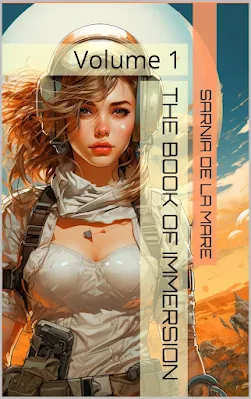Download the Free PDF here
https://iservalan.gumroad.com/l/wticsh
BTS articles are accessible, engaging and packed with cutting-edge analysis. They're perfect for scholars, students, practitioners, activists, and anybody else wanting to better understand exploitation in the global economy today.
For our tenth anniversary, we've collected everything we've ever published into a single, searchable e-handbook. Containing 1000 articles from 800 authors, this book has you covered no matter where your interests lie. A gift to you, our readers, from us.
Dear Sarnia,
Parties for ten year olds are popular in the anti-trafficking world right now. The Freedom Fund celebrated a decade last May, the UK’s Modern Slavery Act in March. Closer to home, we at Beyond Trafficking and Slavery (BTS) also just entered double figures. It was either throw a party as well or take a long, hard look in the mirror. We opted for the latter.
In comes our new, ten-year anniversary feature. This series of articles takes stock by asking how the anti-trafficking field has evolved and where it looks to be heading in the future. And it turns the microscope on ourselves, by offering up a critique of anti-trafficking’s critics – including BTS – over the last decade.
After ten years of work, we really want to know: why, from our vantage point, does it seem like the world has made so little progress on moving Beyond Trafficking and Slavery?
Running in circles or moving forward?
When BTS was founded in 2014, our primary goal was to amplify the voices of activists and researchers who were trying to chart a course away from criminal justice responses to exploitation. We united around a shared suspicion of the anti-trafficking ‘mainstream’, which we regarded as self-serving and superficial, and a shared concern that anti-trafficking campaigns were displacing collective struggles for migrant and worker rights.
We believed that moving beyond trafficking and slavery required focusing upon economic and political systems, rather than individual criminals. That meant facing up to the elephant in the room: neoliberal capitalism.
We have now spent over a decade trying to change how people respond to human trafficking. But despite our best efforts, all the things we hoped to move beyond remain foundational to anti-trafficking policy and activism today. We sometimes feel like a hamster on a wheel. No matter how fast we run, we keep seeing the same kinds of talking points, policies, and arguments show up. We know many of our readers and writers share this frustration.
Through conversations with our contributors, readers and critics, we've identified some key mistakes we've made over the years. Firstly, it was wrong to place trafficking at the centre of our analysis. By doing so, we've become dependent on the very problem we seek to resolve. We've also come to learn that debates about terminology don't tend to get us very far. And that we can't treat anti-trafficking as a monolith, because the field is not one thing.
Find out more about what we've learnt, and what we'd do differently if we could start all over again:
Explore the series so far
Ten years on, have we moved Beyond Trafficking and Slavery?
We started BTS in 2014 to help everyone better understand the root causes of exploitation. Did we succeed?What helps practitioners listen to their critics? An interview with Nick Grono
Freedom Fund’s CEO says it’s ‘ridiculous’ to criticise anti-trafficking as a whole. To be heard, critics must be more preciseWe know how to identify exploitation. Now we need to stop it
Ten years after the UK committed to tackle modern slavery, we’re no closer to preventing it. But we have the toolsLabour rights won't make criminal gangs go away
‘Decent work’ isn’t always possible. Advocates should stop shying away from criminal justice in anti-traffickingTwenty years of slow progress: Is anti-trafficking changing?
Two decades in, Anti-Trafficking Review’s editor says maybe activists still don’t understand social change
#BookOfImmersion #StrataSeries #SarniaDeLaMare #ImmersiveFiction #TaleTellerClub
The Book of Immersion : Volume 1 Kindle Edition
by Sarnia de la Mare (Author) Format: Kindle Edition
Book 19 of 23: The Book of Immersion
See all formats and editions
The Book of Immersion: Volume 1
by Sarnia de la Mare
In a future where code meets consciousness, one being begins a haunting transformation. Renyke—an AI on the edge of humanity—awakens to emotion, sensory overload, and the fragile beauty of connection. Guided by the enigmatic Flex, their deepening bond explores intimacy and friendship, neurodivergence, and the complex world of feeling through an autistic spectrum lens.
Read on Kindle Unlimited for free
Complete Book All Strata on Kindle
Individual Chapters/Strata
The Book of Immersion : Volume 1 Kindle Edition
by Sarnia de la Mare (Author) Format: Kindle Edition
Book 19 of 23: The Book of Immersion
See all formats and editions
The Book of Immersion: Volume 1
by Sarnia de la Mare
In a future where code meets consciousness, one being begins a haunting transformation. Renyke—an AI on the edge of humanity—awakens to emotion, sensory overload, and the fragile beauty of connection. Guided by the enigmatic Flex, their deepening bond explores intimacy and friendship, neurodivergence, and the complex world of feeling through an autistic spectrum lens.
Read on Kindle Unlimited for free
Complete Book All Strata on Kindle
Individual Chapters/Strata


